Kids’ Privacy Law: COPPA & Global Compliance for Websites
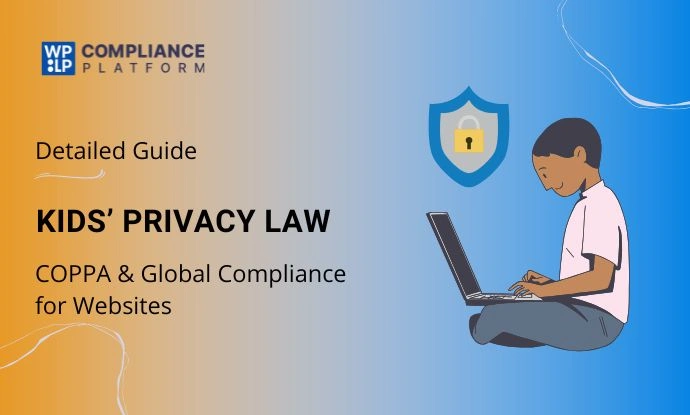
Summary
It mentions the fundamental child consent requirements of COPPA, including the necessity of verifiable parental controls, and offers a brief overview of similar regulations in the UK, Europe, and APAC regions.
Moreover, it also presents an actionable guide for COPPA compliance, highlighting best practices for child consent requirements.
It also introduces the WPLP Compliance Platform as a vital tool for generating compliant child privacy policies.
Is your website child-privacy ready?
In today’s world, where children are more online than ever, regulators are watching closely. The consequences of not protecting their data are more severe than ever, with multi-million dollar penalties and lasting damage to your brand’s reputation.
And the question arises: Are you compliant with kids’ privacy law? Don’t get caught off guard! Navigating laws like COPPA and the GDPR isn’t just a legal necessity; it’s a business imperative.
This blog is your complete roadmap to understanding and implementing global child privacy requirements. We’ll break down the complex legal jargon into clear, actionable steps, showing you how to safeguard children’s data and build trust with parents. All of this while protecting your business!
So start reading to explore the essential compliance steps your business needs to take today.
- Why Kids’ Privacy Law Matters: Online Risks and Regulatory Trends
- What is COPPA? Key Requirements and Who Must Comply
- Global Child Data Protection Laws (US, EU, UK, APAC, etc.)
- Core Child Privacy Compliance Steps to comply with COPPA
- Child Privacy Policy Generators: Making Compliance with kids’ privacy law Easy
- Best Practices for Child Consent, Notices, and Parental Controls
- How does the WPLP Compliance Platform Help to comply with kids’ privacy law?
- FAQ
- Conclusion
Why Kids’ Privacy Law Matters: Online Risks and Regulatory Trends
In today’s digital world, children are exposed to significant risks due to unchecked data collection, which can lead to dangerous situations, such as:
- Behavioral Profiling: Algorithms monitor a child’s online activity, creating detailed profiles that are used for targeted advertising.
- Unsafe Content and Communities: Without proper controls, children might come across inappropriate content or unwanted interaction with strangers.
- Data Breaches: Data breaches could put kids at risk of identity theft or future exploitation. Hackers could easily compromise the personal information collected, and this would mean non-compliance.
In response to these threats, governments worldwide have established stringent kids’ privacy laws. The push for regulatory action is clear, with penalties for non-compliance reaching millions of dollars.
One such instance was when the U.S. Federal Trade Commission (FTC) imposed multi-million dollar fines on companies like TikTok and YouTube for failing to comply with COPPA. This sent a clear message that child privacy is a top enforcement priority.
What is COPPA? Key Requirements and Who Must Comply
The Children’s Online Privacy Protection Act (COPPA) is the foundation of child privacy legislation in the United States. This law applies to websites and online services, including mobile apps.
COPPA is for children under 13 years old, as well as the general audience sites that purposefully collect personal information from this age group.
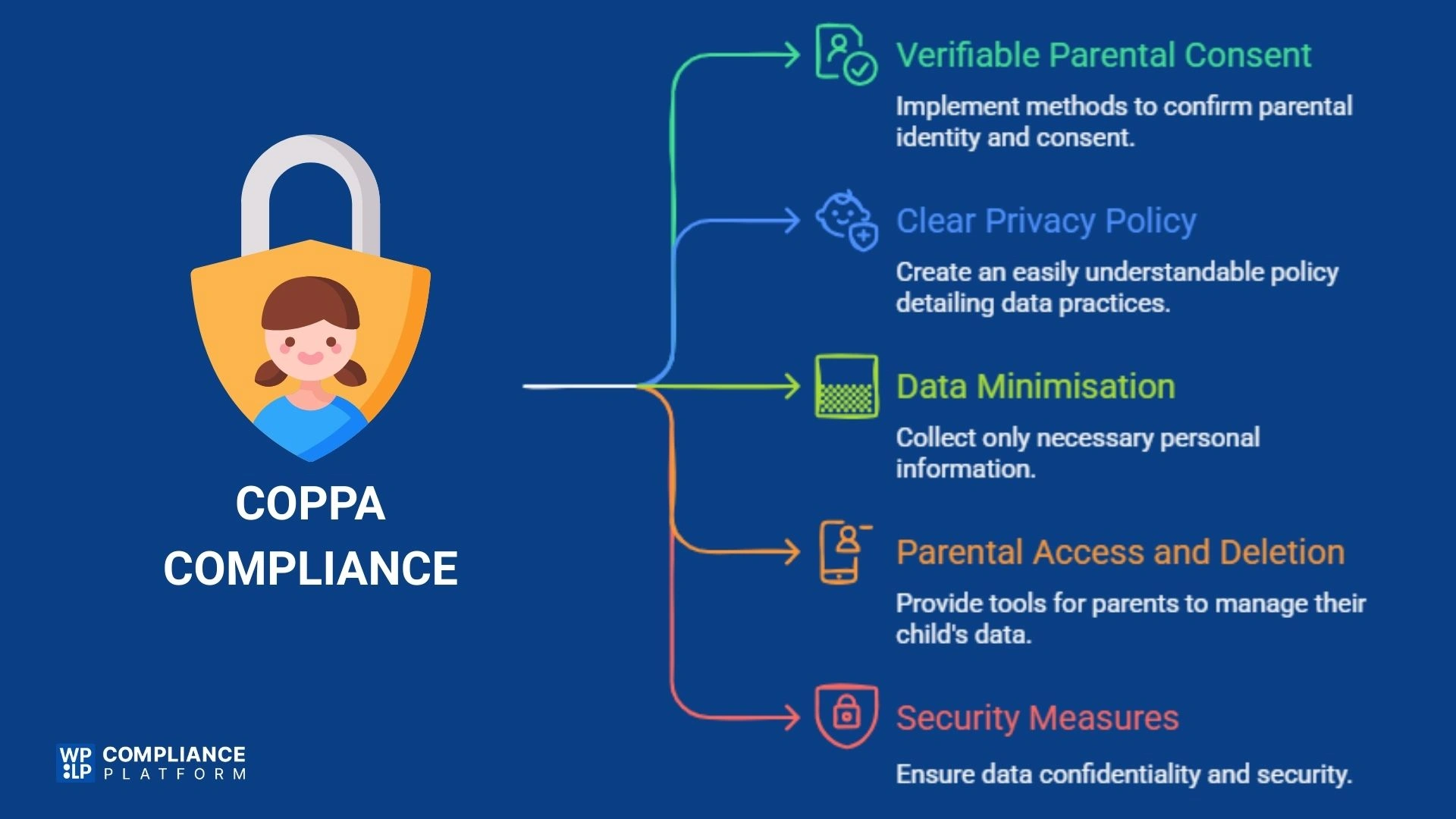
For a comprehensive COPPA compliance guide, you must understand the core requirements of this law:
- Verifiable parental consent: Before collecting, using, or sharing a child’s personal information, you must obtain verifiable parental consent. It is the law’s most essential aspect. Consent management methods should be designed reasonably with respect to the available technology, to ensure that the individual providing consent is indeed the parent.
- Clear privacy policy: Your website needs to have a clear, prominent, and easy-to-understand privacy policy. It should clearly outline your data collection practices concerning children.
- Data Minimisation: You should avoid collecting more personal information than required for a child to engage in an activity. This is known as data minimisation, and is super crucial for regulations like GDPR.
- Parental access and deletion rights: Parents must have the complete ability to review the data collected, withdraw consent, and request deletion of their child’s information.
- Security Measures: You must make sure to take steps to safeguard the confidentiality and security of the kids’ data you collect.
If you somehow fail to comply with these regulations, you could end up having to pay millions of dollars in fines and penalties, apart from legal trials.
Global Child Data Protection Laws (US, EU, UK, APAC, etc.)
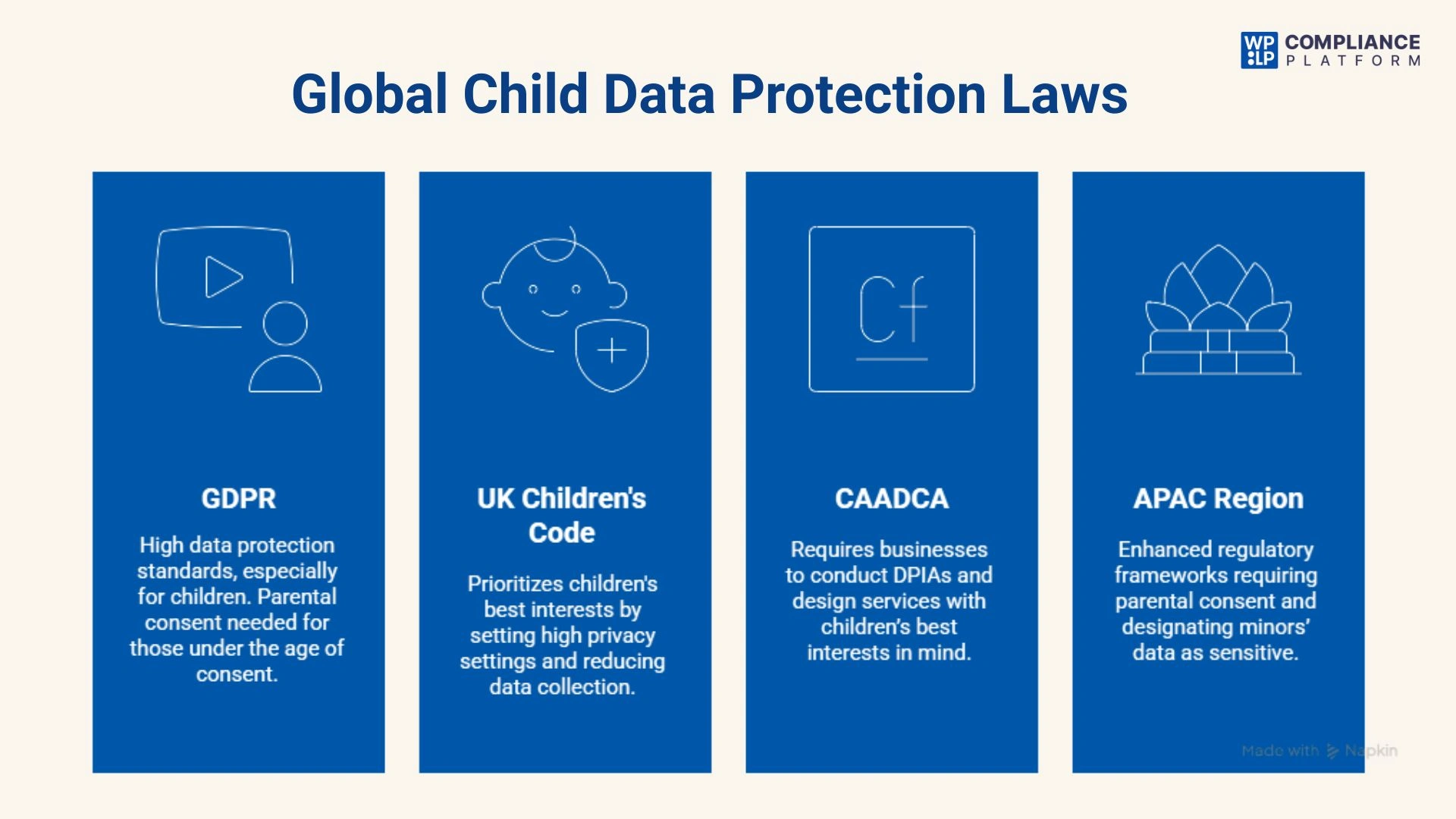
While COPPA is a law specific to the United States, similar regulations are emerging around the world, each with its distinctive details. Some of the global child data protection laws are:
- General Data Protection Regulation (GDPR): GDPR is well known for its high standards of data protection, particularly concerning children. Under GDPR, the general age of consent for online services is 16, but individual states can lower this to as young as 13 years. For children below this age, companies must obtain parental consent.
- UK age-appropriation design code: This is also known as the “children’s code”. This regulation applies to any online service that is likely to be accessed by a child under 18 in the UK. It needs companies to design their services in a way that prioritises the best interests of children, which involves setting high privacy settings and reducing data collection.
- California Age-Appropriate Design Code Act (CAADCA): California enacted the CAADCA, which applies to websites that are likely to be accessed by users under 18 years old. It requires businesses to conduct a Data Protection Impact Assessment (DPIA) and design their services with children’s best interests in mind.
- APAC region: Countries in the Asia Pacific region have also enhanced their regulatory frameworks. India’s new Digital Personal Data Protection Act mandates parental consent for children under 18. In China, laws designate minors’ data as sensitive, requiring parental consent. Australia and Japan have their own regulations as well, generally having the age of consent as 15 or 16 years.
Comparison between Child Privacy Laws
| Law | Jurisdiction | Age of Consent / Protection | Core Requirements |
| COPPA | U.S. | Under 13 | Verifiable parental consent, clear privacy policy, and data minimization. |
| GDPR | EU | Under 16 (or lower) | Parental consent for children under 16 (or lower). |
| Children’s Code | UK | Under 18 | Best interests of the child, high privacy settings by default. |
| CAADCA | California | Under 18 | Data Protection Impact Assessment (DPIA), designed in the child’s best interest. |
| India DPDP Act | India | Under 18 | Parental consent is needed, restricted processing of data that may harm children. |
| China PIPL | China | Under 14 | Parental consent is needed, which categorizes data as “sensitive.” |
Core Child Privacy Compliance Steps to comply with COPPA

To prepare your website or online service for child privacy compliance, follow these steps:
- Identify your audience: Determine who your service is targeted to. If it is targeted to children or may attract minors, you need to comply with child privacy laws.
- Develop a child-friendly privacy notice: Your website should have a privacy policy that can be easily understood by parents and children. Avoid complex language and jargon and use clear, simple language.
- Obtain verifiable parental consent: One of the most important child consent requirements of COPPA is to obtain parental consent. Before collecting any data from a minor, you must obtain parental consent. You could use consent forms, credit card verifications, and so on to achieve this.
- Minimise data collection: Collect only the essential information that you need to deliver your service.
- Offer parental controls: It’s a good idea to provide parents with parental controls to review, modify, and delete their child’s data whenever they wish.
- Conduct regular reviews and updates: You should perform regular audits and update your policies regularly to ensure compliance.
Child Privacy Policy Generators: Making Compliance with kids’ privacy law Easy
Creating a compliant privacy policy from scratch can be a daunting task. COPPA and international laws are often complex, and meeting all requirements takes time and can lead to mistakes.
This is where you can take the help of specialised tools, and policy generators come into play, streamlining the process and helping you stay compliant.
The WPLP Compliance Platform is one such great child privacy policy generator tool that makes the task easier for WordPress users. It’s created especially to automate the process. As a result, it ensures that your site’s policies are not only accurate at the time of creation but also stay updated as privacy laws update.
This enables busy website managers to get a legally sound privacy policy without having to learn a new skill.
Best Practices for Child Consent, Notices, and Parental Controls
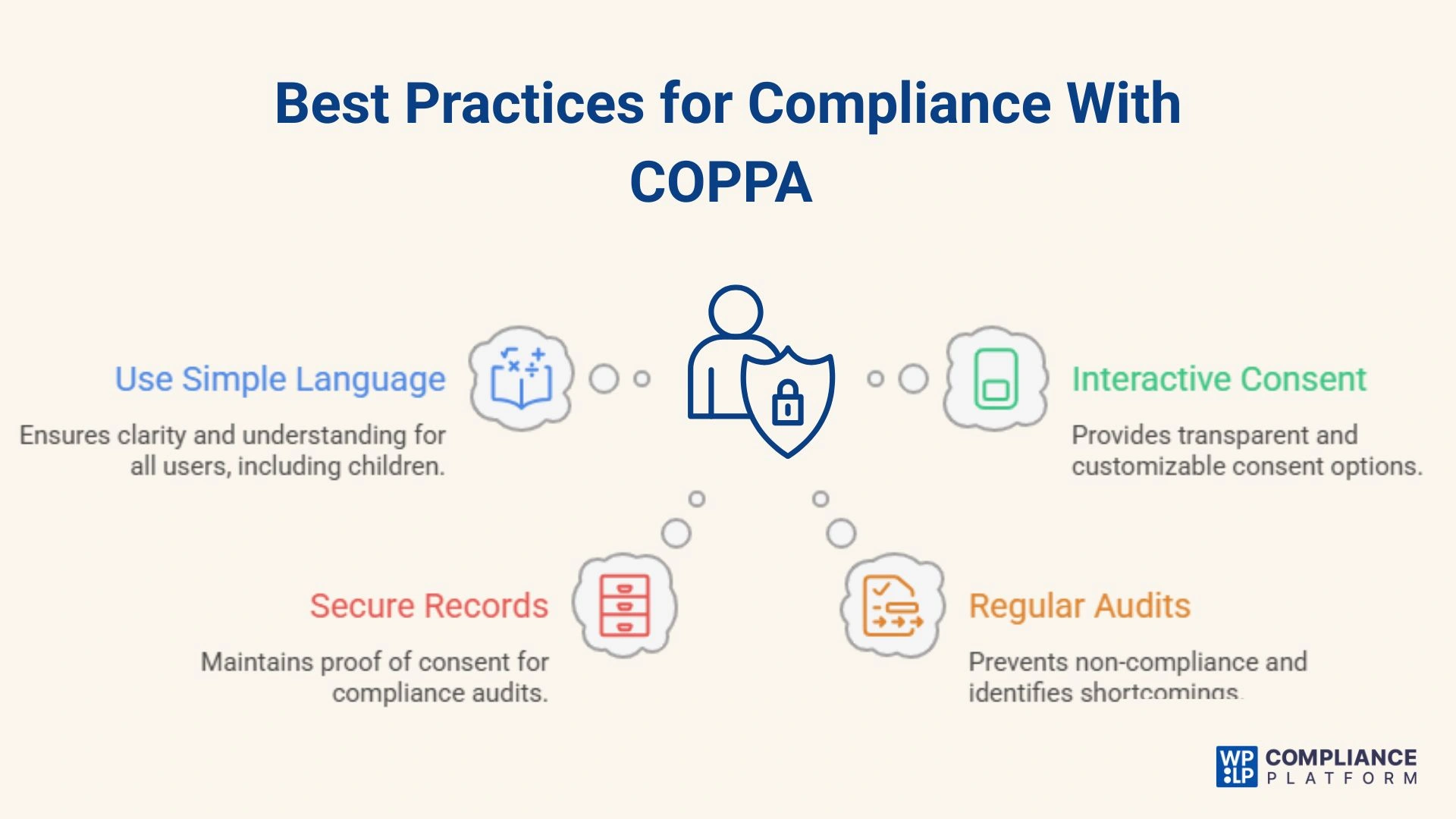
Simply knowing what the kids’ privacy law, COPPA, is not enough to stay compliant and avoid fines. You must have knowledge of the best practices for child consent, notices, and parental control.
We’ve listed some of the best practices below:
- Use simple and clear language: Always use straightforward and simple language that all users can understand. Avoid overwhelming users by using fancy legal jargon and dense text. You might want to use visual aids so that children also easily understand the privacy concepts.
- Interactive consent: It’s best to incorporate interactive features such as a straightforward “I Agree” or “I Disagree” button or toggles for customisable settings. As a result, the consent is transparent and free from dark patterns.
- Maintain Secure Consent Records: You must always keep a secure and audit-ready record of all parental consent actions. This is proof in case of future compliance audits.
- Perform regular audits: Conducting regular audits is a must. Think of the as a risk preventative measure. They also help you find your shortcomings. You must regularly assess your data processes to confirm that you’re not collecting data in a non-compliant way. It’s best to conduct audits every 6 months or after every update.
How does the WPLP Compliance Platform Help to comply with kids’ privacy law?
Creating a child privacy policy from scratch is a complex, time-consuming task. This is where specialized tools like the WPLP Compliance Platform shine, simplifying the process for WordPress users.
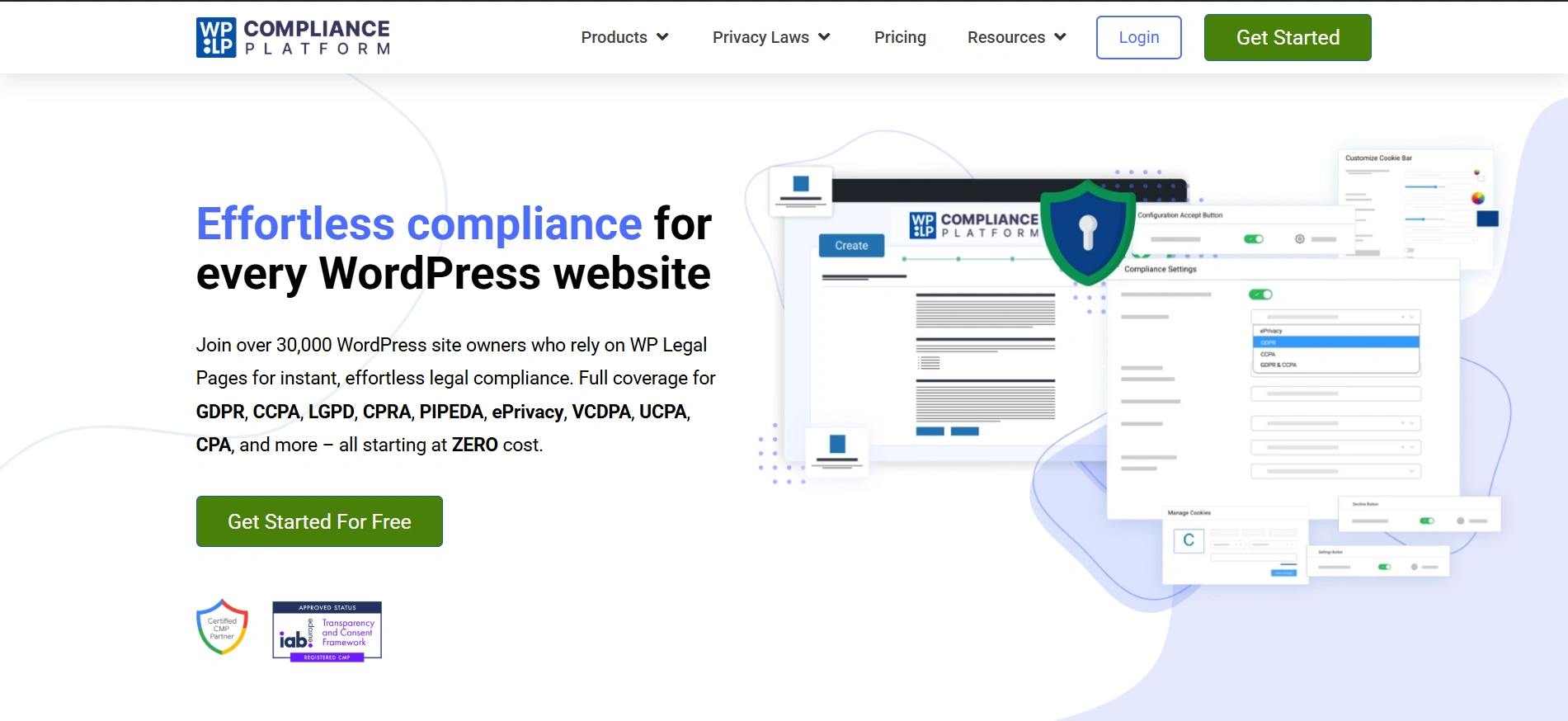
The WPLP Compliance Platform offers you two solutions that are WP Cookie Consent and WP Legal Pages.
WP Legal Pages
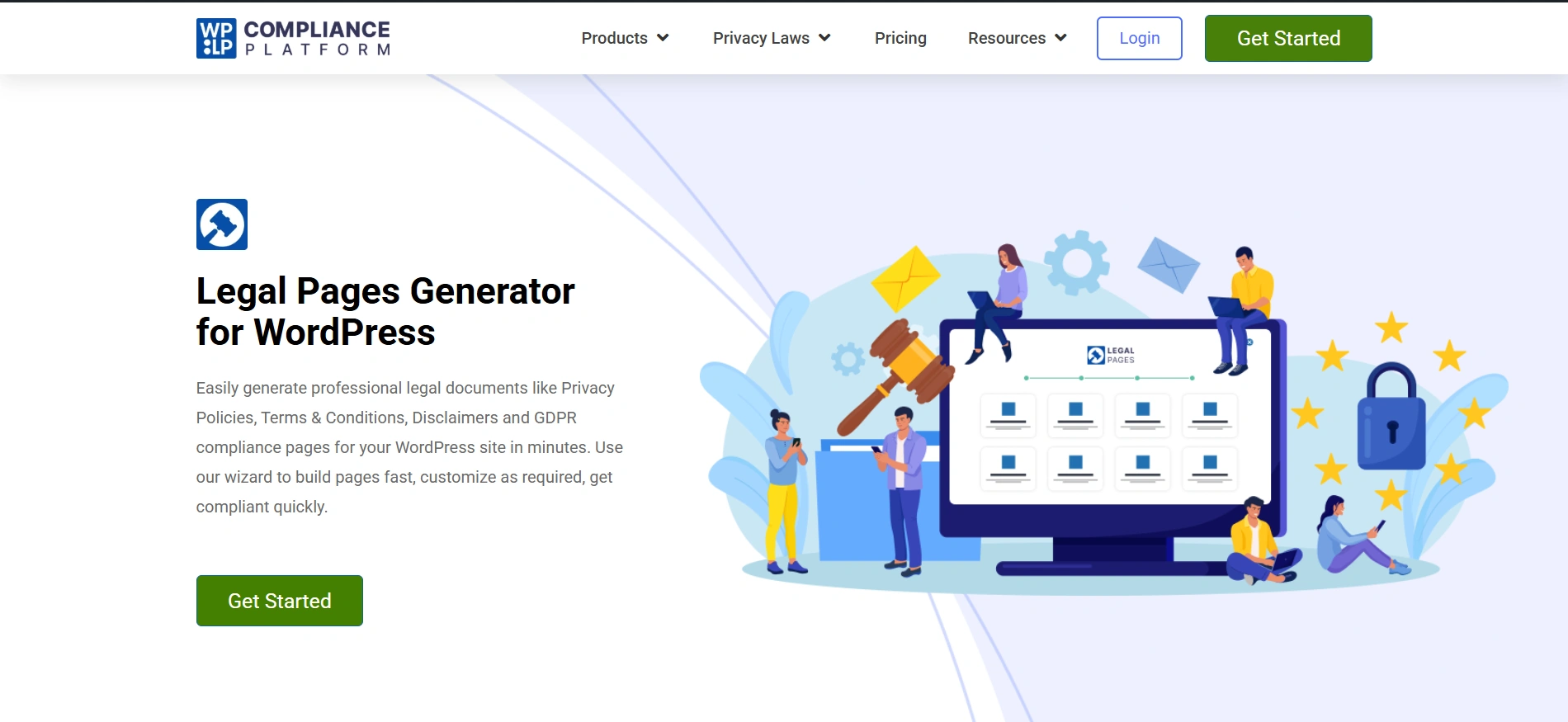
WP Legal Pages is a reliable compliance WordPress plugin for your website. It offers pre-built legal templates to ensure your website meets regulatory standards.
Moreover, this plugin is ideal for businesses of all types, as it simplifies the creation of essential legal documents like privacy and cookie policies so that you can stay compliant with data privacy regulations.
It is fully compliant with COPPA, and you can generate a privacy policy especially catering to the kids’ privacy laws.
WP Cookie Consent
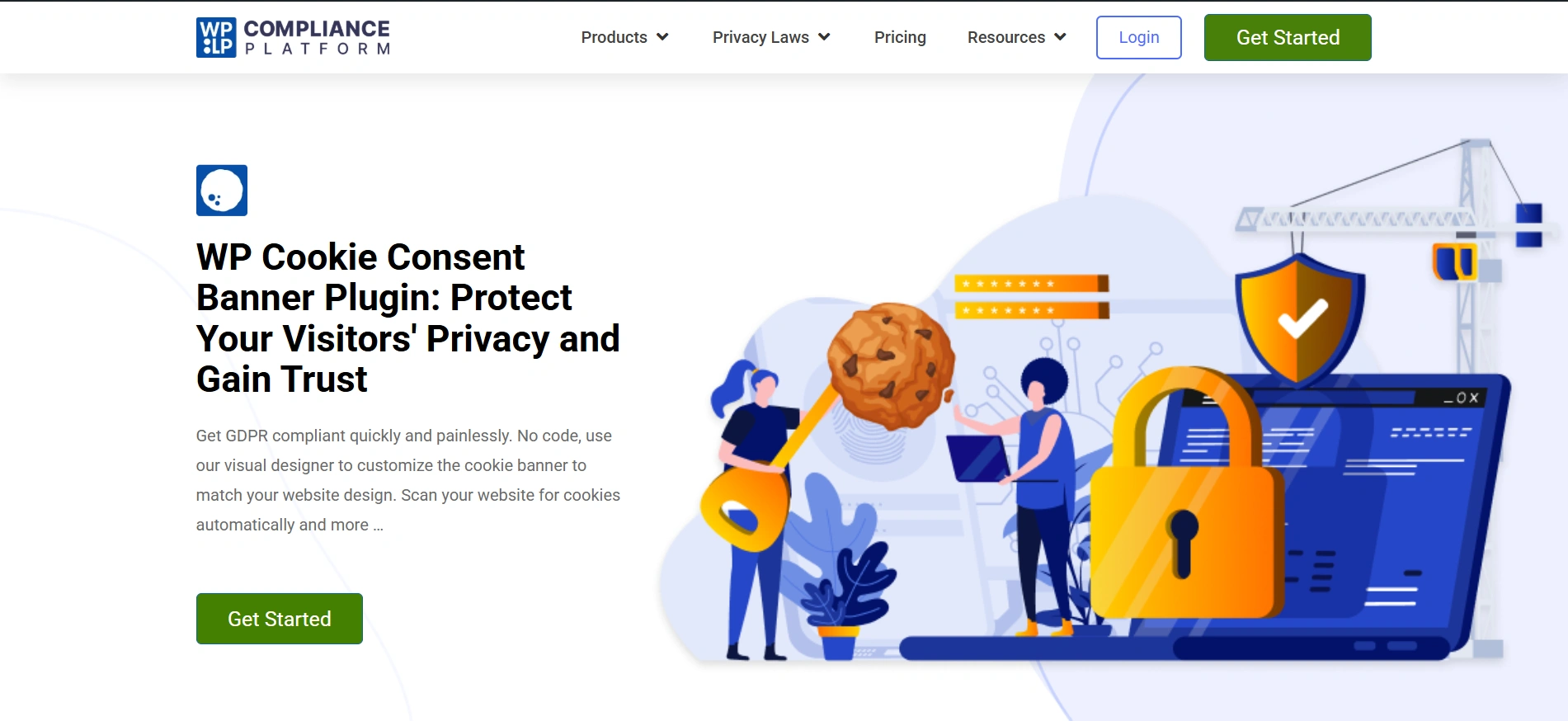
WP Cookie Consent is an effective solution for ensuring your WordPress site complies with GDPR and other global privacy regulations, such as CCPA. This plugin helps manage user consent through customizable cookie banners, making it easy to maintain legal compliance while offering users control over their data.
Additionally, the plugin offers a user-friendly interface for effortless setup and customization of your cookie consent banner.
The WPLP Compliance Platform is a Consent Management Platform with which you can easily create COPPA-compliant privacy policies and cookie banners.
Features:
- COPPA-compliant legal pages: You can easily create COPPA-compliant legal pages if your website targets and collects data from users below the age of 13 years. It gives you all the crucial details in a systematic way. Moreover, you get to customise the content according to your needs.
- Guided Wizard: The WPLP Compliance Platform features a wizard to guide you through the entire process of creating legal pages. You only have to answer a few relevant questions about your business, target audience, and target geographic location, and within a few seconds, you are good to go.
- Add age verification pop-up: You can add an age verification pop-up while creating your legal pages. Simply add the minimum age you want your users to be to be able to access your website, add the verification pop-up description, and you’re good to go. You can also add the content to show the invalid age pop-up.
- Consent Logs: The WPLP Compliance Platform enables you to log consent given by users systematically. You can also export this consent into an Excel file for future audits or as proof in case regulators come knocking at your door. Maintaining consent logs is extremely vital for your website if you want to stay compliant.
- Data Request Forms: The WPLP Compliance Platform enables you to add DSAR forms to your website. Using this, users can request to know how their data is used. Parents might want to know where and how websites use their child’s data. As a result, this is super important.
FAQ
The Children’s Online Privacy Protection Act (COPPA) is a federal law in the United States that protects the online privacy of children under the age of 13. It is important to comply if your site targets children under the age of 13 or if you knowingly collect their data. The WPLP Compliance platform helps you easily comply with COPPA, without needing a lawyer to start out.
The Federal Trade Commission (FTC) uses several factors, such as subject matter, visual content, use of animated characters, and the age of models, use of language and vocabulary, and so on, to determine what counts as child-directed content.
The age covered varies from law to law. COPPA is for users under 13, but the UK Children’s Code and California’s CAADCA cover users under the age of 18. The age of consent under GDPR is generally 16, but can be as low as 13 in some European countries.
To verify parental consent online, the FTC provides multiple approved methods, including a consent form signed by the parent and returned via mail or fax, using a credit card to confirm identity, or using a toll-free number staffed by trained personnel.
Staying compliant with the kids’ privacy law is crucial if you want to avoid legal troubles and penalties. Using tools like the WPLP Compliance Platform automates the process, generating policies, managing parental consent forms, and keeping everything up-to-date with a simple WordPress plugin. All of this within a few minutes and without needing a lawyer to start out.
Conclusion
Protecting children’s privacy isn’t just a legal obligation in today’s digital era. It is a matter of building trust and showcasing responsible business practices. In case of non-compliance, the stakes are high, from steep fines to reputational damage.
By understanding and implementing laws like COPPA and other child data protection laws, you can create a safer and more trustworthy online environment for your youngest users.
We recommend using the WPLP Compliance Platform to instantly comply with these children’s privacy laws, without even needing a lawyer.
Ensure your site is child-privacy ready. Try our automated compliance tool today! For more information on kids’ privacy law, visit our website.
Disclaimer: This article is for informational purposes only and not legal advice. Please consult a legal professional for compliance guidance.
Liked reading this article? Here are other similar articles that you can try:
- Consent Audit and Logging: Best Practices & Tools for Compliance
- What Are Functional Cookies? A Complete Guide for Websites
- Cookieless Future: Everything You’ll Need To Know
Ready to get started? Try WPLP Compliance Platform today and see how easy compliance can be. If you have questions, our support team is here to help you every step of the way.
